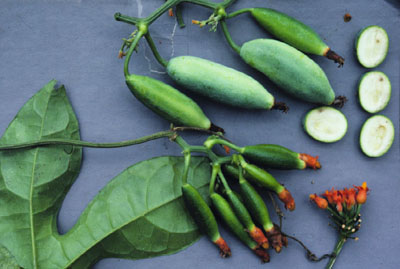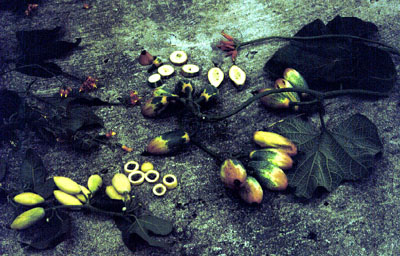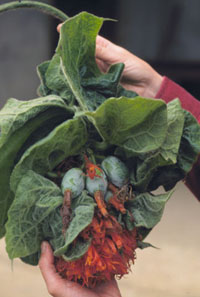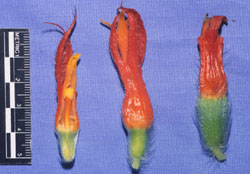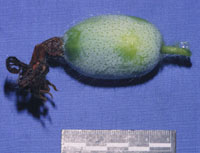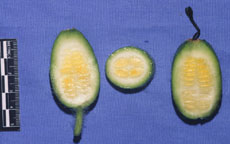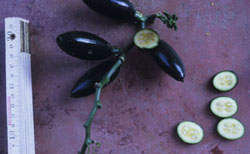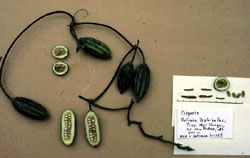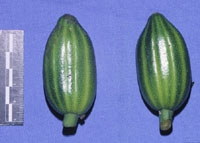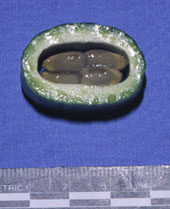The Gurania Pages
Page 3
Amanda
K. Neill
Pistillate flowers of Gurania
and Psiguria are usually produced at the tips of long, leafless
stems, which hang below and away from the tree branches that support the
plant. The fleshy fruits range from the size of a grape to that of
a small cucumber. The skin is smooth and may be dark to pale green
with pale stripes or spots, pale yellow, or green with bright orange splotches.
The numerous seeds are like those found in many squashes and melons, and
are arranged in four longitudinal rows inside the fruit.
Above three species of Gurania
are
shown. In the picture on the left, you can see the development of
the ovaries. A staminate inflorescence is shown in the lower right.
The picture on the right shows two species from Bolivia, with both staminate
and pistillate inflorescences. Below is a strangely fasiculated pistillate
inflorescence of Gurania eriantha from Ecuador. The youngest
flower is long-sectioned to show the pistil. The fruits are covered
with fine hairs, as are the flowers, leaves, and stems.
Below are three species of Psiguria
in
fruit. The ovules, in four rows, are produced by two carpels (zones
of placentation). Mature seeds are covered by a mucilagenous aril.
| On the left are seeds
of two species of Gurania, and on the right are two species of Psiguria. |
 |
Page 1
Page 2
Page 4
Photos by John Janovec and Michael
Nee.
Last updated 24 May 2001 by
Amanda Neill.
